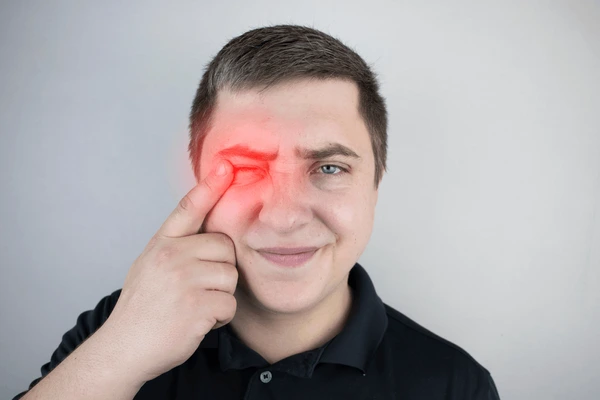Learn about the warning signs of optic neuritis and how early detection can protect your vision. Insights from the Best Eye Surgeon in Kolkata explain symptoms, causes, and care tips.
Optic neuritis is a condition where the optic nerve, which connects your eyes to the brain, becomes inflamed. This inflammation can disrupt normal vision, sometimes causing sudden vision loss or visual distortions. Recognising the early symptoms is crucial, as timely intervention can prevent long-term complications and protect overall eye health.
This article explains the key warning signs, possible causes, and preventive strategies to ensure you or your loved ones get the right care at the right time.
Understanding Optic Neuritis
The optic nerve plays a vital role in vision, transmitting light signals from the retina to the brain. When the nerve is inflamed, the communication between the eye and brain is disrupted, resulting in a range of visual issues.
Common Causes of Optic Neuritis
- Autoimmune conditions: Multiple sclerosis (MS) is a frequent underlying cause.
- Infections: Viral infections or certain bacterial infections can trigger inflammation.
- Inflammatory disorders: Conditions like lupus or sarcoidosis may affect the optic nerve.
- Nutritional deficiencies: Lack of vitamins like B12 can sometimes contribute.
- Medications or toxins: Certain drugs or toxins may induce nerve inflammation.
Understanding the root cause is essential for effective treatment and recovery.

Key Warning Signs of Optic Neuritis
Recognizing the warning signs of optic neuritis early can make a significant difference in outcomes. Here are the most commonly observed symptoms:
1. Sudden Vision Loss
- Vision in one eye often deteriorates rapidly over hours or days.
- Some patients may notice blurred or dim vision, while others may experience near-total vision loss.
2. Pain with Eye Movement
- Discomfort or sharp pain when moving the affected eye is common.
- Pain may increase with blinking, looking up, or side-to-side movement.
3. Loss of Color Perception
- Colors, especially reds, may appear faded or washed out.
- Patients often report difficulty distinguishing between similar hues.
4. Visual Field Defects
- Partial vision loss, such as dark spots or “blind spots,” may occur.
- Peripheral vision might remain unaffected initially.
5. Flashes of Light or Flickering
- Some individuals experience flickering lights or flashes, particularly when moving the eye.
- These visual disturbances can be intermittent or persistent.
6. Reduced Brightness Perception
- Objects may appear dimmer than usual, even in well-lit environments.
- This symptom can precede more severe vision loss.

Additional Symptoms to Watch For
While the main warning signs are related to vision and eye movement, other indicators can accompany optic neuritis:
- Headaches or mild ocular discomfort.
- Difficulty adjusting to light changes.
- Occasional nausea or dizziness if inflammation is severe.
Prompt recognition of these symptoms can lead to early diagnosis and prevent irreversible vision damage.
How Optic Neuritis is Diagnosed
Diagnosing optic neuritis involves a combination of clinical examination, imaging, and functional tests:
1. Comprehensive Eye Examination
- Vision tests, color vision checks, and visual field assessments are conducted.
- Ophthalmologists examine the optic nerve for swelling or pallor.
2. Imaging Tests
- MRI scans of the brain and optic nerves help detect inflammation and assess risk for multiple sclerosis.
3. Blood Tests
- To rule out infections, autoimmune conditions, and nutritional deficiencies.
4. Additional Functional Tests
- Visual evoked potentials (VEP) may be used to measure nerve signal transmission.
Early diagnosis allows doctors to recommend timely treatments that reduce inflammation and preserve vision.

Treatment Options for Optic Neuritis
Treatment focuses on reducing inflammation, addressing underlying causes, and supporting recovery:
1. Corticosteroids
- Short courses of oral or intravenous steroids are often prescribed to reduce nerve inflammation.
2. Treating Underlying Conditions
- If optic neuritis is linked to multiple sclerosis or autoimmune disorders, disease-modifying treatments may be recommended.
3. Nutritional Support
- Ensuring adequate intake of vitamins, especially B12, supports nerve health and recovery.
4. Vision Rehabilitation
- In some cases, visual therapy and adaptive strategies can improve functional vision.
Lifestyle Measures to Support Eye Health
While medical treatment is essential, lifestyle changes can enhance recovery and protect long-term vision:
- Regular eye check-ups to monitor progress.
- Balanced diet rich in leafy greens, omega-3 fatty acids, and antioxidants.
- Avoid smoking and excessive alcohol, which may worsen inflammation.
- Manage stress and maintain overall health to support immune function.

Frequently Asked Questions
1. Can optic neuritis affect both eyes?
Usually, it affects one eye, but in rare cases, both eyes can be involved.
2. Is optic neuritis a sign of multiple sclerosis?
It can be an early symptom of MS, but not all patients with optic neuritis develop MS.
3. How long does recovery take?
Vision often improves within weeks to months, though some residual deficits may persist.
4. Can children get optic neuritis?
Yes, pediatric optic neuritis can occur and may require specialized care.
5. Are there ways to prevent optic neuritis?
While not always preventable, managing underlying autoimmune or infectious conditions reduces risk.
Importance of Early Detection
Recognizing the warning signs of optic neuritis early and seeking professional care can prevent irreversible vision loss and improve quality of life. Modern diagnostic tools and treatments have significantly enhanced recovery outcomes for patients who act promptly.
Protect Vision Through Awareness and Early Action
Being attentive to subtle changes in vision, seeking timely medical evaluation, and following expert guidance ensures that optic neuritis is managed effectively. Awareness, early detection, and appropriate care can make a profound difference in preserving sight and maintaining eye health.

